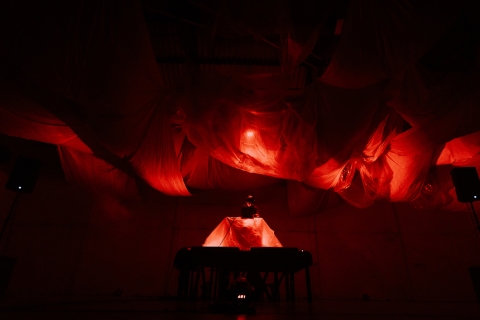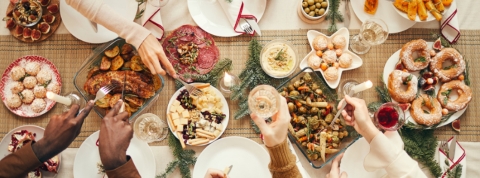It has been unprecedented times. One moment, the kids were happily off to school, and just as they start getting used to the school routine, the pandemic situation threw things off routine again. Kids are required now to stay home and learn online instead. Somehow, we have all started getting used to this ON again – OFF again routine.
Just because school is on and off, doesn’t mean learning has to be. Why not take this opportunity to engage your kids into some science at home!? Not only will the kids be learning something new, but they will also understand that science is not just something you do in school. It is something that very much applies to our everyday lives.
And all you need to keep the kids busy and put a smile on their faces are just a few kitchen staples. The kids will be learning and experimenting new stuff, plus it is truly a great way to keep the kids off their gadgets too!
Mini Volcano ‘explosion’

When vinegar (an acid) is mixed with baking soda (a base), there is a spectacular chemical reaction, almost like a volcano. This reaction releases a gas called carbon dioxide.
What you need:
Baking soda, vinegar, a container or a cup and food colouring (optional).
What to do:
- Add some baking soda to the cup. Add some food colouring (if you like).
- Pour vinegar on top of baking soda (and food colouring).
- Now watch how the substance sizzles and bubbles over the edge.
Colour the Cabbage

You can show kids how water flows from the roots of plants into their leaves, by putting cabbage into food colouring. This experiment can also be used as an example of capillary action, where kids actually get to see the water’s movement from the stalk up through the leaves.
What you need:
One cabbage, three containers, three shades of food colouring and water.
What to do:
- Separate the cabbage leaves from the stalk. Place one leaf into each container and fill it with water.
- Add a few drops of different food colours into each container.
- Wait for one day and see what happens…
Shaving Cream Rain

This experiment shows how clouds hold invisible water vapours that turn into rain. The shaving cream represents the clouds and it shows how they can hold water vapours for so long, until it becomes heavy and ‘drops’ the water – rain.
What you need:
Glass vase or jar, shaving cream, (blue) food colouring and a dropper.
What to do:
- Fill the vase for ¾ with water.
- Add shaving cream till the vase is full.
- Using a dropper, start adding coloured water to the shaving cream.
- Now watch the cloud (shaving cream) hold the coloured water until it becomes too heavy and the coloured water starts to ‘rain’.
Magic Milk

A good magic trick is fascinating, and this one is a cool magic milk experiment you have to try. It has got all to do with surface tension.
What you need:
Some milk (preferably room temperature), some food colouring, a plate or bowl, cotton buds and dish soap.
What to do:
- Pour some milk into a shallow plate or bowl.
- Add a few drops of food colouring on top of the milk.
- Dip a cotton bud in dish soap and then dip it into the milk where the food colours are.
- Now watch the magic of the colours moving and swirling on the plate.
The soap reacts with both the proteins in the milk and the milk fats, causing a chemical reaction that breaks the surface tension, allowing the colours to mix and move about more freely. The soap makes the proteins change shape, sending them swirling, which in turn makes the colours swirl about.
Self Inflating Balloons

This is a twist from the vinegar-baking soda experiment. If you put baking soda in an empty bottle and vinegar in a balloon, when attached together, the resulting gas will be enough to inflate the balloon on its own.
What you need:
A balloon, a bottle, a funnel, one tablespoon of baking soda and three tablespoons of vinegar.
What to do:
- Using a funnel, add one tablespoon of baking soda into the bottle.
- Now wash and wipe the funnel clean. Place the small end of the funnel to the opening of the ballon and pour in three tablespoons of vinegar into the balloon.
- Carefully stretch out the open end of the balloon and place over mouth of bottle, while leaving the rest of balloon hanging.
- Now lift up the balloon to pour the vinegar into the bottle while continuing to hold the balloon at the seal, and watch what happens!
There you have it, just my list of easy experiments you can do with kids at home. They are so much fun, that kids may want you to repeat them over and over again. Plus, all the experiments are done with everyday household staples, making it not so intimidating for parents too.
If you need more ideas for things to do at home with the kids, have a look here at our post about creating your own edible garden and here for some great ideas to turn recyclables into art!



















